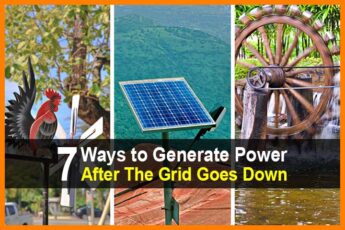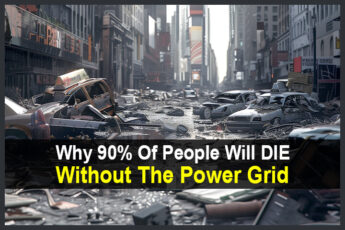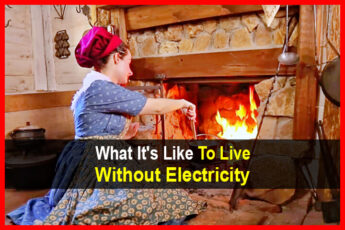Estimated reading time: 12 minutes
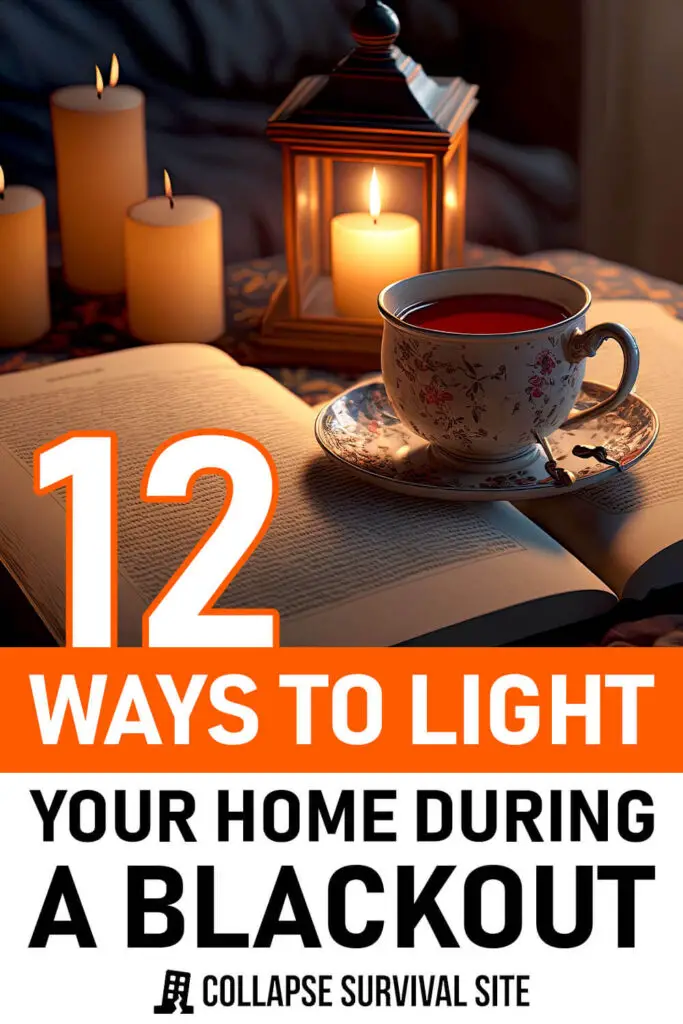
When countries begin to collapse, one of the most obvious signs is rolling blackouts. There are many causes such as a shortage of fossil fuels, lack of basic materials, terrorist attacks on power stations, or governments simply lacking the funds to keep the power plants operating.
Right now, there are many countries experiencing rolling blackouts including Pakistan, Bangladesh, Yemen, Afghanistan, and many others. As the world economy worsens and natural resources become harder to find, blackouts will become a regular thing.
Eventually, the lights will go out—and stay out. And not just in countries like Pakistan. Major countries such as the United States will also struggle to keep the lights one because no matter how much money you have, you can't buy resources that no longer exist.
While no one can predict when the final blackout will occur, we can be certain that temporary blackouts will become more and more common in the coming years. People will have to get used to going without power for hours or even days at a time.
In olden times, people had to take advantage of the daylight while they could. They got up with the sun and went to bed shortly after sunset. That gave them a longer work day in the summer, when there was more work to do on the farm.
Sleeping through the longer nights in the winter not only allowed them to catch up on their rest, but also stay in a warm bed through the colder hours of the night. But there have always been exceptions. Some people have to work at night.
Other times, there are tasks that just have to be done at night. If you’re keeping livestock and one decides to give birth, you can’t exactly say, “Wait till morning.” Nor can you do that to your child when they’re sick.
These needs have led to humanity's invention of many different methods for producing light. And soon, we’re going to need these methods again. I’d recommend having as many as possible, as your lighting needs will vary.
Below, you'll find an overview of the best ways to light your home during a blackout.
Want to save this post for later? Click Here to Pin It On Pinterest!
Let The Sun Shine
Before talking about making artificial light, we want to be sure that we’re getting the most possible benefit out of the sun. Sunlight is plentiful and free, but our homes aren’t always built in such a way as to let enough sunlight in. There’s something fundamentally wrong with having to use artificial lights indoors during the daytime, just because we aren’t letting enough sunlight into our homes.
To start with, make sure that you have sufficient windows in your homes and that they are unobstructed. I’ve seen many a home with nice windows in it, but the windows were covered all the time, causing the people living there to use electric lights. It’s almost as if they don’t realize that those shades or drapes will open.
If you really want light inside your home, put in skylights, either the more traditional type or the newer tunnels or tubes. These new ones are much easier to install and are highly efficient, due to the curved lens and polished metal surface on the inside of the tube.
If you’ve never had skylights in your home, you’ll be amazed at just how much light you can get from them, making it seem like the lights are on, even when they are off.
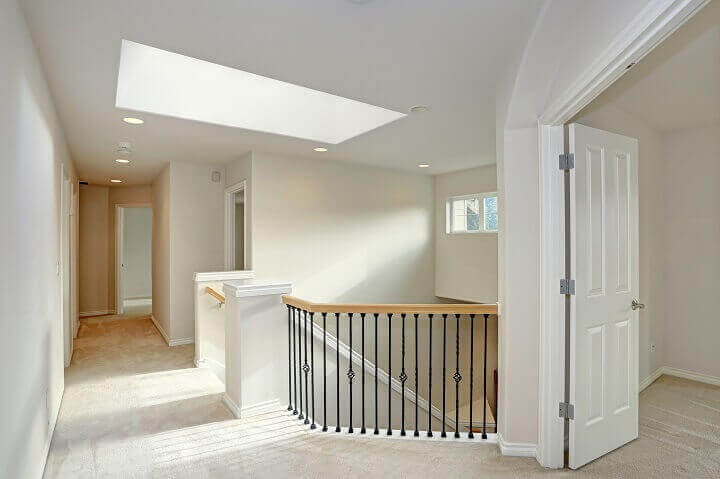
Fire For Light
Humanity's oldest form of making artificial light are through building a fire. Once our ancestors harnessed fire, they started finding different uses for it.
Homes with open fireplaces had a built-in light source, allowing the family to gather around the fire, using its light for sewing, reading, and handicrafts. They then went on to find ways of making that light more portable, so that they could use it wherever they were.
Wood-Burning Stove
If you put a fireplace or wood-burning stove in your home to provide heat during an emergency, make sure that it has a glass door and not a metal one. You want to get the most benefit out of that fire, and that includes getting light from it as well. You could leave the door open instead, but that’s a safety hazard.
Oil Lamps
Besides the fireplace, probably the oldest means for producing artificial light is the oil-burning lamp. Oil lamps can be made in a wide variety of styles, including nothing more than a bowl filled with oil and a wick.
The oil used in the lamp can vary extensively as well, needing only to be something flammable, which isn’t too volatile. Oil lamps have been used with oils squeezed from a variety of plant life, as well as rendered from animal fat and even burning mineral oil extracted from the ground.
For a blackout in the home, you’re best off with some sort of glass oil lamps because they will produce the most light, as glass lanterns have less that can block the light. However, you need to take into consideration exactly where the lantern will be used, as you might need some sort of metal cage around it to protect it from breaking.
Another useful thing which has been used in the past, along with oil lamps, is reflectors. Lamps hung on the wall usually had a polished metal reflector behind them, allowing the light that would normally shine on the wall to be reflected out into the room.
Propane Lamps
There are a variety of propane lamps that are built for camping, running off of small propane canisters. These can be a bit expensive to operate, as those small canisters aren’t cheap.
However, you can reduce this cost by buying an adapter to refill the small canisters off of a larger propane tank. The larger tank is cheaper per pound, as well as being useful for running the barbecue grille and space heaters.
Gasoline Lamps
Speaking of propane lamps, the Coleman company still produces their gasoline-powered camping lamp. These supposedly run off of Coleman fuel, but in reality, otherwise known as “white gas.” In other words, it’s unleaded fuel.
The big advantage of that in a blackout situation is that gasoline is one of the most readily available fuels there is. If nothing else, you can siphon it out of your car.
If you’re going to have one or more of these lamps as backup lighting, be sure to stock plenty of mantles for them, as well as a rebuild kit for the pump.
Carbide Lamps
Before miners started using electric lights to work, they used to wear a small lamp on their heads. Considering that, it’s amazing that it took so long for manufacturers to start making LED headlamps.
This lamp consisted of a can, with a screw on top and a reflector. It used calcium carbide as a fuel. The calcium carbide was put in the can, along with a few drops of water. That would cause the rocks to give off carbine gas, which is flammable. While not the best light source; it produces enough light to work by.
Candles
Candles require a bit more work to make than oil lamps, but they have the advantage of not being as fragile. This also makes them more portable, able to be taken from the home to where they need to be used. Candles don’t necessarily require a candle stand, unless they are narrow “tapers.”
For survival purposes, one of the best ways to make your own candles is to set multiple wicks in spaghetti-sauce jars and then fill them with melted wax, allowing it to cool and solidify. Having multiple wicks allows one jar to produce the same light as several separate candles. Containing the candle in the jar prevents waste, as the melted wax can’t drip off anywhere.
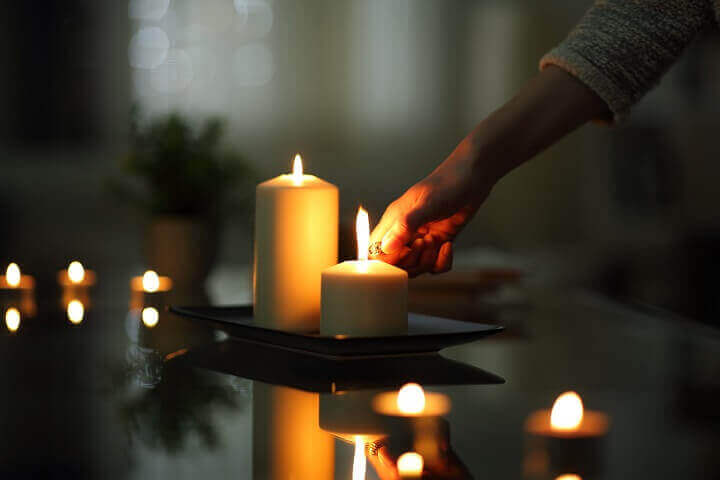
Electricity
Since capturing electricity as an energy source, one of the major uses of electricity has been for producing light. Obviously, we do this in our homes, which is why a blackout is called a blackout. But even when the lights are out, we have ways of using electricity to make light.
Before talking about these lights, allow me to talk about brightness for a moment. There are a number of different ways that light can be measured, with two of the most common being candlepower and lumens. Today, we find these electric lights usually rated in how many lumens of light they produce.
Lumens is a specification that covers the total amount of light being produced by a light source. It can be a bit baffling, because two lights which have the same specification may not illuminate equally if the light cone from one is wider than the other.
Some marketers take advantage of this and exaggerate the quantity of lumens their products produce. To avoid false marketing, you’re better off checking the manufacturer’s website. If they don’t have a website, they might not be a manufacturer but merely marketing something made in China that they put their logo on.
LED Tactical Flashlights
Today’s LED tactical flashlights are a vast improvement over the incandescent flashlights we had before, producing much brighter light, while not having breakable bulbs. Many come with a machined aluminum case, which is nearly indestructible, and some are bright enough to temporarily blind you if you look in them.
The one disadvantage of these lights, especially the brighter ones, is that they are hard on batteries. Even though they use lithium or lithium-ion batteries, which have greater energy density than other types of batteries, they can burn through the batteries pretty quickly. It’s definitely worth buying the rechargeable lithium-ion batteries for them, as that will be cheaper in the long run.
One thing to keep in mind is that cheap flashlights, like cheap anything else, are cheap. The switches in them are likely to go out after some time.
That doesn’t mean they’re worthless; I’ve got them mounted with clips in every room of my house. They make great emergency lights when someone has to grab one quickly. But I wouldn’t count on one of those cheap flashlights as my EDC light or my main flashlight in a survival situation.
LED Headlamps
Along with the advent of LED flashlights, some enterprising manufacturers started making LED headlamps, perhaps getting their idea from the miner’s carbide lamps mentioned above.
The big advantage of a LED headlamp, over a LED flashlight, is that you can have both hands free while using it. That makes it possible to do a lot of things that were difficult to do before.
Most LED headlamps cast a very narrow beam of light, which is great if you’ve got it aligned properly, but useless if you don’t. There are also LED headlamps which cast a wide beam of light in front of you, covering roughly 120 degrees.
These are great when working on things that require moving around a lot. Keep in mind that the light will be spread over that larger area, meaning that the actual amount of light falling on any one square inch is smaller. To make up for this, be sure to buy one with high lumen specification.
Battery Lanterns
The basic difference between a battery lantern and a flashlight is that the lantern is designed to light up an entire tent or room. These come in a wide variety of styles. Most are LED now as well and generally run off of AA batteries. They are an excellent option when you need wide-area lighting. But again, you need to watch out for battery consumption.
There are also LED battery lanterns that are designed for mounting under kitchen cabinets, in closets and for other storage areas. These lights, sometimes referred to as “puck lights” are great emergency lights, anywhere in the home.
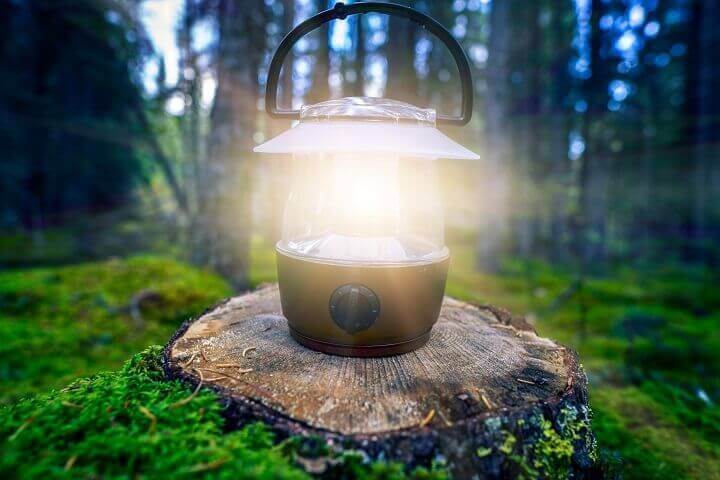
Get Some Solar Charging
If you are planning on using any type of battery-operated lighting during a blackout, then you should also invest in enough solar charging capability that you will be able to fully recharge all your batteries every day.
That’s going to take more than just a solar phone charger; but it’s a worthwhile investment. Lithium-ion batteries are good for about 1,000 charges, so being able to recharge them as often as needed will keep you in light for quite some time.
Chemical Options
While not considered as common, there are a couple of chemical means of producing light; both of which have found a home in the prepping and survival community.
Light Sticks
Chemical light sticks have been around for quite some time. While often used more as a toy, they are a light source. Available in a variety of colors, they don’t really put out a lot of light. They’re actually better used to mark something, like making sure you can keep track of your kids, rather than providing light to work.
In the Army, they’re commonly used to mark a turn in a road, when on maneuvers out in the woods. The one real limiting factor is that once the chemicals are used up, they’re trash.
Photoluminescence
If you ever had glow-in-the-dark stars on the ceiling of your bedroom when you were a kid, then you’re familiar with the concept of photoluminescence. It is light that is emitted from material which has absorbed photons. In other words, you allow it to absorb light during the day and it puts off light when it's dark.
There are photoluminescent emergency lights that you can buy, which will emit light for up to 12 hours, providing enough light to light up the inside of a tent. While not the brightest light there is, this is a great method of providing low-level light for a room or area, without having to burn fuel or go through batteries.
You can also buy photoluminescent signs and tape that can be used for marking. This is used in industry to mark the edges of steps and outlines of doorways, making exit points clear, especially emergency exits.
Like this post? Don't Forget to Pin It On Pinterest!




